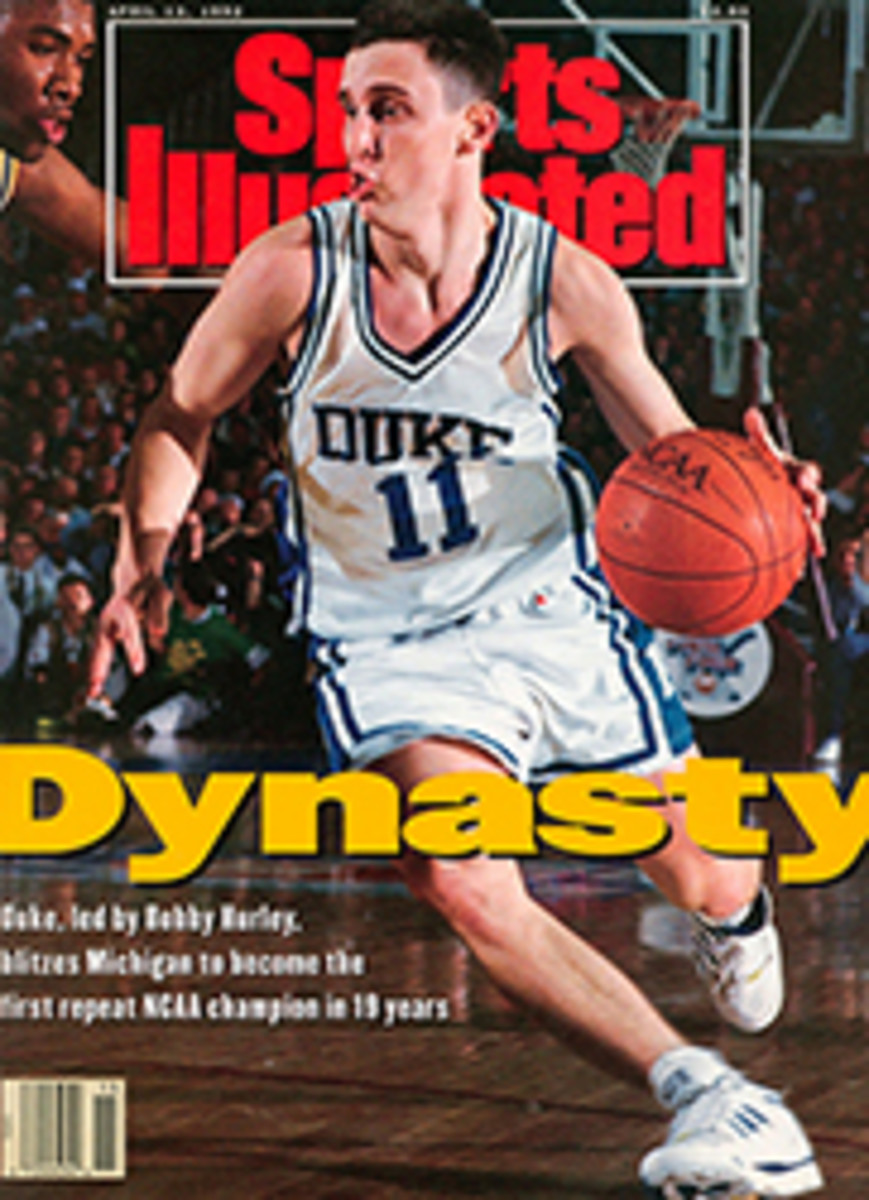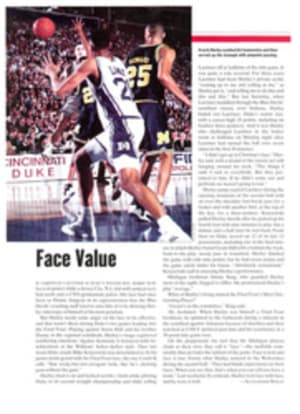
Molly Rules In L.A.
The court inside Stanford's Maples Pavilion was empty early last week, but Tara VanDerveer, coach of the Cardinal women's basketball team, wanted one last look before she headed to Los Angeles with her players for the Final Four. "Before every home game I always stand in the same place and look up at the banner from the 1990 championship," said VanDerveer. "I went in this time, looked up again and said, 'Move over.' "
Move over, indeed. Perhaps way over. On Sunday, Stanford won its second NCAA title in three years, by beating Western Kentucky 78-62 before a disappointing crowd of 12,072 at the Los Angeles Sports Arena. In doing so, the Cardinal—with a starting lineup of three juniors, a sophomore and a freshman—established itself as the team to beat next season too. "Dynasty?" VanDerveer said when it was all over. "No, I don't mind that word at all."
That Stanford won in what was supposed to be a rebuilding season—All-America Sonja Henning graduated last June—was remarkable. Moreover, the Cardinal's fine play during its fast and furious romp in the title game restored some respect to the women's game, respect that was sorely needed after Saturday's comatose semifinals.
Much of the blame for the lackluster opener, between Western Kentucky and Southwest Missouri State, can be placed on the NCAA, which put the Final Four in L.A., necessitating a 9:30 a.m. starting time so that CBS could broadcast both semifinal games before the start of the men's semis. "We had our pregame meal at 6:30 a.m.," said Western Kentucky coach Paul Sanderford. "I couldn't swallow a thing." The game was equally hard to swallow. It featured 63 fouls and 57 turnovers before Sanderford's Lady Toppers emerged as 84-72 winners.
The other semifinal should have been a showcase for two of the finest teams in the country: Stanford and No. 1-ranked Virginia. Instead it turned out to be a battle of nerves between the suddenly tentative Cardinal and the even more nervous Cavaliers, who were facing the possibility of playing in three straight Final Fours without winning a title.
Stanford squeaked out a come-from-behind 66-65 win, which meant that Virginia guard Dawn Staley, winner of the Naismith Award as the top women's player in each of the past two years, ended her career without a national crown. "It hurts," Staley said, talking through tears. "This team deserves so much better."
It was Staley who provided perhaps the most dramatic moment of the weekend. Seconds after converting a twisting layup to put her team within a point with 11 seconds remaining, she dived after a loose ball, which ended up in the hands of teammate Melanee Wagener. Staley screamed for a timeout, but referee Doug Cloud, who had heard only the game's final horn, headed to the showers. An enraged Staley charged after him, screaming, "Time! Time! I called time!" Referee Bob Trammell had heard her, and .8 of a second was put back on the clock. But after Virginia inbounded, Staley couldn't get off a shot in time, and she doubled over as the realization of another Final Four loss sank in.
Stanford's most solid performer in the semis was 6'3" junior All-America center Val Whiting, who had 28 points and 12 rebounds. The Cardinal also got a big lift from junior point guard Molly Goodenbour, who made two key three-point shots to start Stanford's rally from seven points down late in the second half. In the final Goodenbour contributed six assists and 12 points. Afterward she was named Most Outstanding Player of the tournament, an honor that would have shocked her teammates a year ago.
"Last year when Molly got in the game, we would be up by 30," said VanDerveer. "Then we would be up by 10. She just threw the ball away."
VanDerveer, who took over in Palo Alto in 1985, has always emphasized the play of her point guards. She vowed to make Goodenbour into the type of player who would play smart and at breakneck speed. "We made Molly rules," said the coach after the title game. "This year in practice we made her have two hands on every pass or we would stop and take the ball the other way. She also can't shoot in the first two minutes. What she has done is a real tribute to working through stuff that wasn't always fun."
That includes off-season conditioning. VanDerveer enlisted the services of Stanford director of track Brooks Johnson, who designed workouts for most members of the team. "I used to think I was in shape," Whiting said. "Then I came here."
One unfortunate aspect of the women's Final Four is that the title game is played the day after the semis. VanDerveer, however, was unconcerned. "If it comes down to conditioning," she said on Friday, "I'll be very happy."
She would have been just as happy for it to come down to who had watched the most game tape. VanDerveer's love of video is legendary. Two years ago, on a road trip from Tempe to Tucson in Arizona, she discovered that the bus carrying the team was equipped with a VCR. She screamed for the driver to stop and, in the middle of the desert, dug through her luggage stowed underneath the bus to find game tape. Her players were subjected to two extra hours of videotape analysis.
On the way to the Sports Arena on Sunday morning, VanDerveer popped another tape into the VCR. "We all started to groan," said Goodenbour, "and then on came the highlights from the dream season, the 1990 championship. It made us realize what we could do."
It gave them the same inspiration that VanDerveer had gotten from the NCAA championship banner. The banner that will no longer hang alone.

